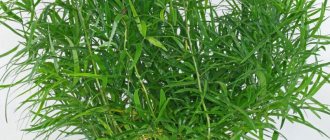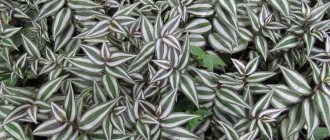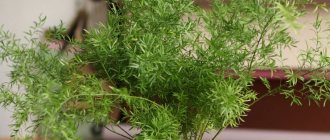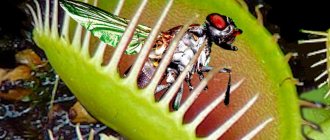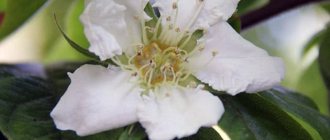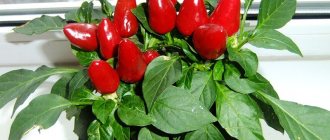Asparagus is the name given to a whole group of perennial shrubs that look like fir trees with soft needles. In our country, this plant is better known as asparagus - branches for decorating flower bouquets.
In culinary terms, asparagus refers to the young shoots of asparagus that are eaten. Many people mistakenly call asparagus soy (Korean) asparagus. In fact, this product has nothing to do with asparagus. Soy asparagus, or fuju, is the dried foam collected from the surface of soy milk by boiling.
Sometimes asparagus is the name for green beans, which is a legume plant and also has nothing in common with asparagus, except for a similar appearance and juicy green color.
What it is
Asparagus (asparagus) is a herbaceous plant of the Asparagus family. For culinary purposes, three varieties of asparagus are cultivated: white, green and purple. These shoots are not produced by different types of asparagus plants: they are distinguished only by the method of cultivation and the degree of maturity.
Content:
- What it is
- Chemical composition
- Beneficial features
- Possible harm
- Application in medicine
- Use in cooking
- How to select and store
- Conclusion
White asparagus
White shoots are considered a delicacy. White asparagus is harvested in March-June. To prevent the shoots from turning green during the growth process, the rhizomes of plants with shoots are hilled up and sprinkled with loose soil so that sunlight does not fall on them. This stimulates the growth of asparagus, but does not accumulate chlorophyll in it, so it remains white.
Green asparagus
Green shoots are harvested all year round. This variety of asparagus accumulates a lot of chlorophyll, which turns the shoots green. These shoots have a brighter taste than white shoots.
Purple asparagus
Purple shoots rarely appear on retail shelves. In order for the shoots to acquire this shade, they are grown in the dark, exposed to sunlight only a few times during the entire growth period. During the ripening process, anthocyanins accumulate in such asparagus, which give the shoots a characteristic bitterness. The peculiarity of purple asparagus is that it turns pale when cooked.
Varieties of tropical plant
Currently, there are more than 200 species of graceful perennial. This species diversity turns asparagus, a mix of which is very easy to create, into an indispensable plant for floristry. The following varieties are considered the most suitable for cultivation at home.
Pinnate asparagus or bristle-shaped asparagus (Asparagus plumosus)
A strongly branching subshrub, native to the tropical forests of Africa, with soft central shoots that have a slight bend, which gives the appearance a special decorative effect. The stems are covered with scaly leaves 0.5 cm long, in the axils of which groups of thread-like branches up to 1.5 cm develop.
Due to the lateral shoots located in the horizontal plane, a separate branch has a peculiar resemblance to a fern leaf. During flowering, which is practically not observed in apartment environments, single white flowers bloom.
Asparagus benuissimus
The species is very similar to the previous one, differing only in the structural features of the cladodes: they are thinner, elongated and located much less frequently.
Sprenger's asparagus (Asparagus sprengeri), also known as dense-flowered asparagus
An evergreen creeping perennial that lives wild on the mountain slopes of the South African region. The bare stems, reaching a length of 1.5 m, are covered with scale-like leaves up to 4 mm, surrounding groups of 3-4 slightly curved cladodes 3 cm long.
Flowering is observed when pink or white fragrant flowers bloom, collected in shield inflorescences. The species has characteristic round red fruits. In the literature it is often found under the name Ethiopian asparagus.
Meyer's asparagus (Asparagus meyeri)
A species with single shoots half a meter high , which are very densely covered with phyllocladies developing in different directions. The appearance of an individual shoot is similar to a fluffy brush.
Crescent asparagus (Asparagus falcatus)
A liana-like representative of the culture with lignified stems covered with thorns, reaching in the natural environment 15 m in length with a diameter of 1 cm. The formations in the form of thorns allow it to climb support without any problems. This asparagus, which is easy to care for at home, has shoots with a maximum length of 4 m.
In the upper part of the lateral shoots, covered with scaly, undeveloped leaves, dark green crescent-shaped cladodes up to 10 cm in length develop. The perennial has good pruning tolerance. When flowering, it forms racemose inflorescences consisting of small cream-colored flowers.
Asparagus racemosus
Subshrub with climbing shoots, the length of which reaches 2 m . The name is due to the brush-shaped inflorescences, consisting of bright pink flowers with a characteristic aroma.
Asparagus medeoloides
The liana is distinguished by its tall growth and very strong branching with evergreen cladodes. The peculiarity of the shoots after cutting to remain fresh for a long time without water has determined its popularity among florists.
Asparagus pyramidalis
Subshrub with vertically growing shoots up to 1.5 m tall. The shoots are densely covered with short cladodes, so that from a distance the plant can be mistaken for a juniper.
Asparagus asparagoides
A beautiful climbing perennial with stems 3 m long, which are covered with bunches of cladodes up to 3 cm.
In addition to cultivation in an apartment environment, the following species are suitable for cultivation in open ground for regions with a temperate continental climate:
- Common asparagus (Asparagus officinalis) or medicinal asparagus is a representative of North Africa that thrives in temperate climates and is therefore known as garden asparagus. It has smooth stems up to 1.5 in height, which are covered with thread-like cladodes, collected 4-6 pieces in bunches. White-yellow flowers are observed both on the stem and on the side shoots.
- Green asparagus, also known as edible asparagus , is a highly branched plant, rich in microelements and vitamins, with a powerful rhizome and underdeveloped leaves. Asparagus shoots are eaten fresh and for preparing a variety of dishes.
Chemical composition
Asparagus is a very healthy and low-calorie product. The shoots of this plant contain up to 92-95% water, as well as:
- carbohydrates - up to 5%;
- proteins - up to 2%;
- vitamins;
- minerals;
- saponins;
- coumarins;
- organic acids;
- phytosterols.
Asparagus is a storehouse of vitamins and minerals. There is an opinion that white shoots are healthier than green and purple shoots. This statement is only true of purple asparagus. But green shoots are unfairly accused: they contain more vitamins and minerals than the white vegetable. They also contain more water-insoluble fiber compared to other varieties: 100 g of raw green vegetables contains up to 10-12% of the body’s daily requirement.
Asparagus is a source of the polysaccharide inulin, which has a hypoglycemic effect.
Asparagus proteins are complete in composition, as they consist of all essential amino acids. However, their quantity in this vegetable is not enough to cover the daily requirement. 100 g of raw asparagus contains up to 10 mg of purine bases, which does not exceed 10% of the daily value, so asparagus can be consumed by gout patients, but in limited quantities.
This vegetable is rich in aspartic acid, an amino acid that improves nervous activity and lowers blood pressure.
Vitamins in green shoots
| Name | Content per 100 g, milligrams |
| Provitamin A (beta-carotene) | 0,5 |
| Lutein, zeaxanthin | 0,7 |
| Vitamin B1 (thiamine) | 0,1-0,14 |
| Vitamin B2 (riboflavin) | 0,1-0,14 |
| Vitamin B4 (choline) | 0,016 |
| Vitamin B5 (pantothenic acid) | 0,27-0,3 |
| Vitamin B6 (pyridoxine) | 0,1 |
| Vitamin B9 (folic acid) | 0,05 |
| Vitamin PP (nicotinic acid) | 1,4 |
| Vitamin C (ascorbic acid) | 20,0 |
| Vitamin E (alpha tocopherol) | 2,0 |
| Vitamin K (phylloquinone) | 40,0-42,0 |
| Vitamin U (methylmethionine sulfonium) | 210,0-250,0 |
Asparagus shoots contain a record amount of vitamin U, an anti-ulcer vitamin-like substance: 100 g of green asparagus is enough to cover the body’s daily requirement. It also contains a lot of vitamin K (more than 35%), vitamin C (20-22%), beta-carotene (over 10%), lutein and zeaxanthin (more than 12%).
The mineral composition of asparagus is no less rich.
The green shoots of this plant contain silicon (more than triple the daily value of 100 g), rubidium (29%), boron (28%), copper and sulfur (19% each), cobalt, phosphorus, iron, iodine, chlorine, potassium, calcium , manganese, selenium. Mineral composition
| Name | Content per 100 g, milligrams |
| Potassium | 200,0 |
| Calcium | 25,0-30,0 |
| Silicon | 100,0 |
| Magnesium | 14,0 |
| Sodium | 2,0 |
| Sulfur | 190,0 |
| Phosphorus | 52,0-97,0 |
| Chlorine | 160,0 |
| Bor | 0,02 |
| Iron | 2,2 |
| Iodine | 0,015 |
| Cobalt | 0,002 |
| Copper | 0,19 |
| Manganese | 0,16 |
| Rubidium | 0,029 |
| Selenium | 0,002 |
Asparagus saponins have an expectorant effect, coumarins improve blood fluidity. The shoots contain a lot of phytosterols (up to 50% of the daily value) - plant analogues of cholesterol. Purple asparagus sprouts are high in anthocyanins, which exhibit powerful antioxidant and anti-inflammatory properties. Asparagus is considered an effective aphrodisiac.
The energy value of 100 g of raw vegetable is 20-21 kcal, so it is classified as a dietary product.
Proper care of indoor asparagus
Proper care of indoor sophisticated asparagus is possible even for novice gardeners, since minimal knowledge and little effort will delight you with excellent results.
Proper soil irrigation is the key to healthy and active growth of the green “pet”. Watering: constant moderate humidity. But it is worth considering the seasonality and cycles of life processes in the plant. Therefore, abundant and frequent irrigation should be in summer, and moderate in winter, when the flower is dormant. It is better to use the bottom watering technique, which allows you not to harm fragile trunks and leaves, and accumulate excess moisture in the trays.
It is important to choose settled water at room temperature as a liquid for such procedures. Spraying in hot and dry weather will be beneficial for the general condition of the bush, which should be done in the early morning or in the evening.
A significant point in caring for the decorative asparagus flower in the usual home conditions is proper and high-quality fertilization of the soil. Such feeding should be carried out weekly in the summer, and once every 4 weeks in the winter. When choosing fertilizers, you should give preference to universal complex mineral mixtures, which can be periodically replaced with weakly concentrated organic additives. Important! It is sensitive to chemicals, so it is better not to experiment with unverified manufacturers of mineral fertilizers.
Beneficial features
Asparagus exhibits many beneficial effects on the human body. Regular consumption of shoots of this vegetable:
- reduces blood pressure;
- normalizes heart rhythm;
- reduces the concentration of cholesterol in the blood;
- has a diuretic effect;
- stimulates intestinal motility;
- heals erosions and ulcers on the walls of the digestive organs;
- improves food digestion;
- removes toxins and waste from the intestines;
- improves blood fluidity;
- reduces the concentration of glucose in the blood.
Asparagus is also useful for normalizing brain function, since the substances contained in it:
- stimulate cerebral circulation;
- restore the myelin sheath of nerve endings;
- improve the conductivity of nerve impulses;
- improve mood;
- promote thought processes;
- relieve fatigue.
Fiber, inulin and B vitamins contained in this vegetable restore the intestinal microflora, prevent fermentation and putrefactive processes in it, and increase immunity.
Asparagus saturates the body with vitamins and minerals, so it is useful for consumption:
- in childhood and adolescence;
- during pregnancy and breastfeeding;
- in the recovery period after illnesses and operations;
- during intense physical activity, for example, among athletes;
- during periods of increased brain activity (during exams, sessions, during stressful situations).
Green shoots contain a large amount of chlorophyll - plant hemoglobin, which promotes hematopoiesis, saturates the human body with oxygen, and increases physical activity.
Where can I buy
Asparagus is a fairly common indoor flower. You can buy it at any flower shop or online store. Cuttings are purchased in a special bag with soil. You can buy seeds for planting. Keep in mind that one package may contain a different number of seeds, so check this information with the seller. Pay attention to the appearance of the plant. It should look healthy, the color should be rich, and the stems and leaves should not be yellowed or dry, without spots.
Growing asparagus
Possible harm
Despite all its beneficial properties, asparagus is highly allergenic, so it should not be consumed by allergy sufferers and patients with bronchial asthma. Due to the ability of asparagus to stimulate the secretion of digestive juices, its use is not recommended for people with high stomach acidity and peptic ulcer disease during an exacerbation.
It is recommended to limit asparagus consumption in case of inflammatory joint diseases, urolithiasis and gout.
Problems during cultivation
- Leaves fall off and turn yellow - dry air, high (low) temperature, lack of fertilizers, watering regime is not followed.
- Spots on brown leaves are sunburn.
- Pale leaves - lack of lighting.
- Wilting is an excess of moisture in the substrate, which leads to rotting of the roots.
- Falling leaves - overheating by sunlight, lack of moisture.
- Elongated shoots - lack of light.
- After pruning, the plant does not develop - the natural state of all asparagus. Stems that have been shortened will not grow, but after a while new young shoots will appear.
Application in medicine
Doctors recommend including asparagus in therapeutic diets for various diseases.
For diseases of the heart and blood vessels
Aspartic acid, vitamins and minerals from asparagus have a positive effect on the condition of the heart and blood vessels, which is useful for:
- arterial hypertension;
- angiopathy;
- arrhythmias;
- atherosclerosis;
- coronary heart disease;
- after heart attacks;
- varicose veins;
- thrombophlebitis;
- phlebothrombosis.
Regular consumption of this vegetable reduces cholesterol concentrations, reduces permeability and increases the elasticity of vascular walls, which is useful for people with a family history of cardiovascular diseases.
For diseases of the gastrointestinal tract
Due to the rich vitamin and mineral composition and the content of water-insoluble fiber in asparagus, the presence of this plant in the daily menu is indicated for:
- gastritis;
- cholecystitis;
- hepatitis;
- biliary dyskinesias;
- enteritis;
- colitis;
- malabsorption syndrome;
- chronic constipation;
- intestinal dysbiosis.
Asparagus has a wound-healing effect on erosions and peptic ulcers of the stomach and duodenum in remission.
For kidney pathologies
For diseases of the urinary system, eating this vegetable reduces swelling and relieves inflammation, therefore it is recommended for use by patients with:
- glomerulonephritis;
- pyelonephritis;
- cystitis;
- urethritis.
Eating green asparagus dishes for men prevents the occurrence of prostatitis and reduces existing inflammatory processes in the prostate gland.
For metabolic and hormonal disorders
The polysaccharide inulin contained in asparagus has a hypoglycemic effect, so this vegetable is recommended for consumption by people suffering from diabetes. Antioxidant compounds of asparagus (anthocyanins, tocopherols, retinol) strengthen blood vessels and prevent the development of diabetic angiopathy.
Chlorophyll, available in large quantities in green sprouts, improves hematopoiesis, increases the level of hemoglobin in the blood, and saturates the body's cells with oxygen. Thus, asparagus fights anemia and exhaustion.
Calcium, which is part of the succulent shoots, stimulates the production of parathyroid hormone - the hormone of the parathyroid glands. Iodine improves thyroid function.
For diseases of the nervous system and sensory organs
Asparagus is indicated for consumption to improve mental activity, as well as for patients with pathologies of the central nervous system and sensory organs:
- senile dementia;
- after strokes;
- Alzheimer's disease;
- multiple sclerosis;
- macular degeneration;
- decreased visual acuity;
- “night” blindness.
During pregnancy
It is useful to include asparagus in the diet of women expecting a child. Green asparagus is especially useful during this period because:
- fiber normalizes stool;
- asparagine improves fetoplacental blood circulation;
- tocopherols contribute to the proper development of the fetus;
- iron and chlorophyll prevent the occurrence of anemia in pregnant women.
If you are overweight
The low calorie content of asparagus sprouts, due to the large amount of water-insoluble fiber they contain, helps combat hunger in overweight people and those on a diet. In addition, fiber in the intestines swells and increases intestinal contents, which helps accelerate intestinal motility, preventing constipation.
Purple asparagus is useful for older people to consume, as its anthocyanins actively fight free radicals, which accelerate the aging process of the body.
There is literary information about the benefits of asparagus for male potency.
Growing ornamental asparagus from seeds at home
Creating indoor greenhouses and decorative compositions in the interior is impossible without mastering the technique of propagating sophisticated asparagus in familiar home conditions. However, there are no difficulties in this process, and even a lack of experience in floriculture will not be an obstacle to achieving excellent results.
In practice, the following reproduction methods are used:
- Seeds at soil temperatures from 20 to 25 ° C.
- Young cuttings.
- Dividing the bush.
Each technique has its own advantages and implementation features, once you understand them, you can easily grow a luxurious, lush bush with lacy branches and elastic stems.
The most durable of all alternative methods is the process of propagating asparagus from collected seeds from a mature bush at home. Planting material is formed in the ripened fruits of the flower, usually in winter. And here the procurement of seeds should not be put on the back burner, since their greatest productivity occurs in the first days after collection.
First you need to place the seeds in a prepared mixture of peat and sand, which should be regularly moistened and covered with glass or polyethylene. It is important that the seeds are covered with soil; they germinate in the dark.
The germination rate of seedlings depends on daily soil ventilation, temperature conditions and proper irrigation. It is necessary to maintain the same temperature, trying not to exceed +21...+22°C.
Condensation that periodically appears on the glass indicates the need to “refresh” the air. Therefore, it is worth raising the insulating elements and allowing the soil to fill with oxygen. This vital action will help speed up the growing of ornamental asparagus from collected seeds at home and give young seedlings energy for germination.
In these comfortable conditions, the first shoots will appear within 4 weeks. As soon as the seedlings reach 10 cm, they can be planted in separate miniature pots with soil, which is the same in composition as for adult relatives.
Growing elegant asparagus using seeds will require a little patience, since only after six months can you evaluate the results of your efforts.
Use in cooking
The taste of boiled asparagus can be compared to a mixture of chicken fillet, cauliflower and nuts. Due to its interesting taste, asparagus sprouts are popular in European and Asian cuisine. They are prepared in different ways:
- boil;
- steamed;
- baked;
- fried.
Asparagus goes well with eggs, bacon, and seafood. In Italian cuisine it is added to pasta and pizza. In French cuisine it is served as a side dish with a creamy sauce. Sliced asparagus is often included as an ingredient in various salads.
Young succulent sprouts of this plant can be easily spoiled by improper cooking. To prevent this from happening, after cooking, the shoots must be quickly removed from the saucepan or frying pan and immediately placed in a container prepared in advance with ice or ice water. This will allow you to stop the cooking process of the vegetable in time.
In this way, you can preserve not only the color of asparagus (especially green), but also its taste and elasticity. Ideal sprouts should remain crispy after cooking.
Description of the appearance of asparagus and its origin
Asparagus is a delicate and elegant plant, well known since the Soviet times. At that time, many establishments that were heavily visited by people were decorated with it, and asparagus was also popular in indoor floriculture. But with the arrival of the Dutch variety on our flower market, the plant began to be gradually forgotten. But the flower deserves to be once again interested in not only experienced flower growers, but also beginners.
Asparagus - a classic of home gardening
Asparagus has many faces. Its species are represented by evergreen perennial subshrubs with developed underground rhizomes and branched stems, woody vines or herbaceous plants.
Asparagus has a powerful underground root consisting of many tubers.
Root part of asparagus
The stems are flexible and have branches. Asparagus does not have leaves as such. Instead, numerous branches or cladodes collected in bunches are located on the branches. They are very needle-like and seem prickly in appearance, but in fact they are very soft and delicate.
Asparagus stems are flexible and have many branches.
The flowers are small - solitary or collected in inflorescences. They are painted white, less often pink or beige.
The fruits look like red berries. Inside the fruit there are one or more seeds covered with a thick black skin. The berries are poisonous, so if you have children or animals in the house, you should take precautions!
After pollination of asparagus flowers, fruits ripen - berries.
Asparagus belongs to the Asparagus family, which unites not only decorative, but also medicinal and edible species. The plant is distributed almost throughout the world - on the African continent, Asia, America and Europe. But mostly it prefers places with a dry climate.
The rhizome, which accumulates moisture for future use, helps to survive long periods of drought.
Growing asparagus at home is not difficult. The plant is undemanding in terms of maintenance conditions. Unless watering and lighting should be approached with special responsibility. And one more nuance should be taken into account - some types of asparagus can grow greatly and you need to allocate more space for them.
Asparagus is often used as a component of landscape design. The plant is a wonderful element of decoration and landscaping of cozy courtyards and terraces. Florists decorate bouquets and flower arrangements with asparagus sprigs. The plant looks very impressive in hanging baskets or flower pots.
How to select and store
It is better to buy fresh white asparagus during its growing season (March-June); green asparagus can be purchased all year round. When purchasing a fresh vegetable, you should inspect it carefully. There is no need to purchase pale green, yellow, spotted specimens. The sprouts should be elastic to the touch, and the leaves located along them should be tightly pressed to the stem.
Best materials of the month
- Coronaviruses: SARS-CoV-2 (COVID-19)
- Antibiotics for the prevention and treatment of COVID-19: how effective are they?
- The most common "office" diseases
- Does vodka kill coronavirus?
- How to stay alive on our roads?
If you rub two fresh shoots against each other, you will hear a sound similar to rubbing your finger on clean glass. The occurrence of such a sound is the main sign of freshness of asparagus.
Fresh shoots are stored in the freshness zone of the refrigerator, wrapped in a damp cloth, for no more than two days.
You can cook fresh or frozen asparagus. Since fresh sprouts lose their consistency and taste after freezing, only boiled sprouts are frozen. You should not buy frozen asparagus: it is better to prepare it yourself. To do this, fresh shoots need to be boiled a little (white ones for one, green ones for three minutes), cool on ice, dry, and then freeze in bunches of 5-6 pieces. Frozen boiled vegetables can be stored for 6 months at a temperature of -18°C.
Perennial transplantation
Asparagus up to 5 years old needs to be replanted annually in the spring. Older plants can be replanted every 2 years. So often the plant requires replanting, as its root system grows quickly. The volume and height of the new pot should be several centimeters larger than the old one.
When replanting a perennial, you should trim the roots a few centimeters and only then place it in a new pot, in which a layer of drainage material is poured at the bottom, and then a layer of nutrient substrate. Such soil is prepared as follows - humus, leaf soil and river sand are mixed in a ratio of 2:2:1. Place the perennial in the pot, fill it with the remaining soil and lightly compact it. After planting, the plants are watered well, and the first fertilizing is done 6-8 days after transplantation.
Related article:
How to grow callas
